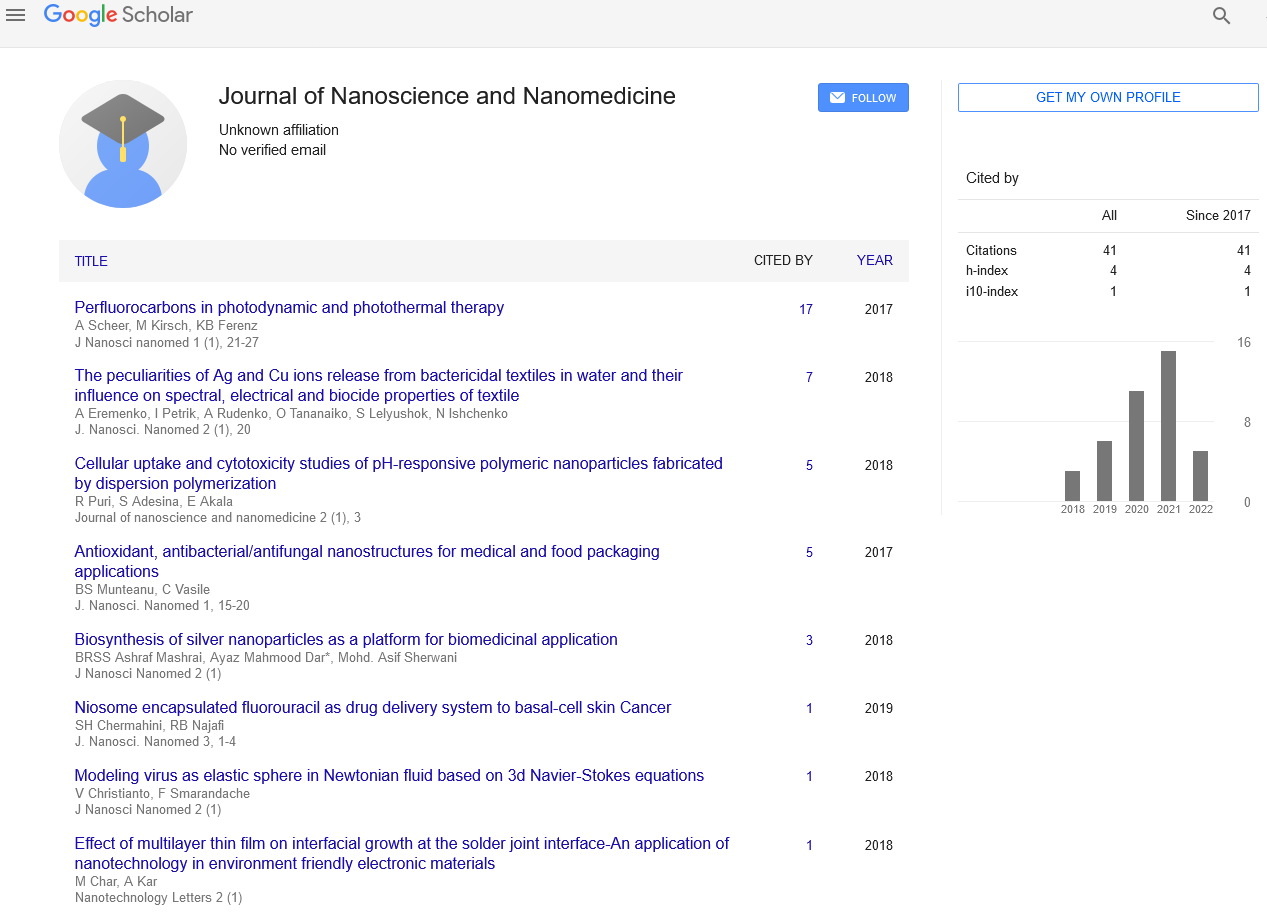Promising Candidates for Lithium Ion Batteries: High Nickel Lithium-Rich Layered Cathode Nanomaterial
Received: 17-Oct-2017 Accepted Date: Oct 18, 2017; Published: 26-Oct-2017
Citation: Weiguo Chu. Promising Candidates for Lithium Ion Batteries: High Nickel Lithium-Rich Layered Cathode Nanomaterial. Nanotechnology Letters. October-2017;1(1):4.
This open-access article is distributed under the terms of the Creative Commons Attribution Non-Commercial License (CC BY-NC) (http://creativecommons.org/licenses/by-nc/4.0/), which permits reuse, distribution and reproduction of the article, provided that the original work is properly cited and the reuse is restricted to noncommercial purposes. For commercial reuse, contact reprints@pulsus.com
Over the past decade, much attention has been paid to the development of lithium-ion batteries (LIBs) owing to the increasing demand for power sources with higher energy and power density. LiCoO2 has been one of the most widely used cathode materials for its easy synthesis and excellent reversibility since the commercialization of LIBs. However, LiCoO2 also suffers from many drawbacks such as high cost, toxicity and relatively low practical capacity (about 140 mAh g-1, around half of its theoretical capacity), which limits its extensive application [1,2]. Therefore, new types of alternative materials are quite urgent as far as practical applications are concerned. Recently, layered lithium nickel manganese oxides, LiNixMn1-xO2 crystallizing in the O3 structure same as LiCoO2 (space group Rm) have been extensively investigated and can be considered as the alternative material for the commercialized LiCoO2 [3-6]. However, the work regarding LiNixMn1-xO2 is predominantly concerned with the Mn-rich type which normally shows relatively low discharge capacity and voltage.
Another type of compound with excess Li, Li-rich layered cathodes formulated as Li1+xM1−xO2 (M = Mn, Ni, and/or Co) receive increasing attention due to high specific capacity (~280 mAh/g) and energy density (~1000 Wh/kg) [7-11]. Most of them are focused on the cathodes with high manganese contents which however show relatively low discharge voltages compared to the conventional LiCoO2 [12]. Furthermore, Mnrich Li1+xM1−xO2 compounds are normally faced with serious voltage fade issue, making it very hard to be commercialized. Recently, it is found that increasing the Ni content in Li1+xM1−xO2 could suppress discharge voltage fade and simultaneously enhance the cyclic performance significantly [13]. The increase of Ni content can increase both the capacity and voltage but may enhance the occupation of Ni at the Li lattice site and thus lead to the sluggish kinetics of Li+ transport [14]. Fortunately, the excess Li is found to suppress the occupation of Ni at the Li site effectively which is expected to favor the performance of Li1+xM1−xO2 [14,15].
Therefore, the incorporation of excess Li and high Ni is anticipated to probably make Li1+xM1−xO2 perform well. Although little is known about the high Nickel Li-rich Li1+xM1−xO2 some groups have successfully synthesized the single phase high Nickel Li-rich Li1+xM1−xO2 [14,16,17]. Li et al. reported on the successful synthesis of Li1+x(NiyMn1−y)1−xO2 (y=0.2, 0.33, 0.4, 0.5 0.6, and 0.7, 0 ≤ × ≤ 0.34) with the discharge capacity of about 200 mAh/g [16]. The Ti additive is found to be capable of enhancing the cyclic performance of Li1.167Ni0.4Mn0.383Co0.05O2 effectively [17]. Again, the lithium-rich high nickel core shell structures comprised of nanoparticles were reported to have the discharge capacities around 220 mAh/g and the fairly good cycle performances [14]. However, despite the high capacity and high discharge voltage the lithium-rich high nickel layered cathode tends to cause the decomposition of electrolyte due to the possible catalyzing effect of nickel ions with high content.
To sum up, the high Nickel-Lithium rich layered cathode has the high capacity and high discharge voltage which is very promising as candidates for next generation LIBs although it may lead to the possible decomposition of electrolyte. However, its performance is believed to be improved by alien element doping, nanostructure design and surface coating as already done for other cathode materials.
REFERENCES
- Reimers JN. Electrochemical and In Situ X-Ray Diffraction Studies of Lithium Intercalation in LixCoO2. J Electrochem Soc. 1992;139:2091-97.
- Ohzuku T. Solid-State Redox Reactions of LiCoO (R3m) for 4 Volt Secondary Lithium Cells. J Electrochem Soc. 1994;141:2972-77.
- Sun YK. Cobalt-Free Nickel Rich Layered Oxide Cathodes for Lithium-Ion Batteries. ACS Appl Mater Interfaces. 2013;5:11434-440.
- Ko S. A Co-free layered LiNi0.7Mn0.3O2 cathode material for high-energy and long-life lithium-ion batteries. J Alloys Compd. 2014; 613:96-101.
- Lu Z. Layered Cathode Materials Li[NixLi1/3-2/3xMn2/3-1/3x]O2 for Lithium - Ion Batteries. Electrochem. Solid-State Lett. 2001;4:191-94.
- Ohzuku T. Layered Lithium Insertion Material of LiNi1/2Mn1/2O2: A Possible Alternative to LiCoO2 for Advanced Lithium-Ion Batteries. Chem Lett. 2001;8:744-45.
- Oh P. A Novel Surface Treatment Method and New Insight into Discharge Voltage Deterioration for High-Performance 0.4Li(2)MnO(3-)0.6LiNi(1/3)Co(1/3)Mn(1/3)O(2) Cathode Materials. Advanced. Energy Materials. 2014;4:9-16
- Manthiram A. Nickel-Rich and Lithium-Rich Layered Oxide Cathodes: Progress and Perspectives. Advanced Energy Materials. 2016;6:16-23.
- Yu H. Direct atomic-resolution observation of two phases in the Li(1.2)Mn(0.567)Ni(0.166)Co(0.067)O2 cathode material for lithium-ion batteries. Angew Chem Int Ed Engl. 2013;52:5969-73.
- Qiu B. Gas-solid interfacial modification of oxygen activity in layered oxide cathodes for lithium-ion batteries. Nat Commun. 2016;7:12-8.
- Hy S. Performance and design considerations for lithium excess layered oxide positive electrode materials for lithium ion batteries. Energy & Environmental Science. 2016;9:1931-54.
- Zheng JM. Li- and Mn-Rich Cathode Materials: Challenges to Commercialization. Advanced Energy Materials. 2017;7:6-25.
- Shi JL. Mitigating Voltage Decay of Li-Rich Cathode Material via Increasing Ni Content for Lithium-Ion Batteries. Acs Applied Materials & Interfaces. 2016;8:20139-147.
- Li J. Synthesis and Characterization of the Lithium-Rich Core-Shell Cathodes with Low Irreversible Capacity and Mitigated Voltage Fade. Chemistry of Materials. 2015;27:3366-77.
- Sun YK. Cobalt-Free Nickel Rich Layered Oxide Cathodes for Lithium-Ion Batteries. Acs Applied Materials & Interfaces. 2013;5:11434-11440.
- Li J. Structural and Electrochemical Study of the Li–Mn–Ni Oxide System within the Layered Single Phase Region. Chemistry of Materials. 2014;26:7059-66.
- Kou YJ. The effect of Ti doping on electrochemical properties of Li1.167Ni0.4Mn0.383Co0.05O2 for lithium-ion batteries. Solid State Ionics. 2016;296:154-57.





